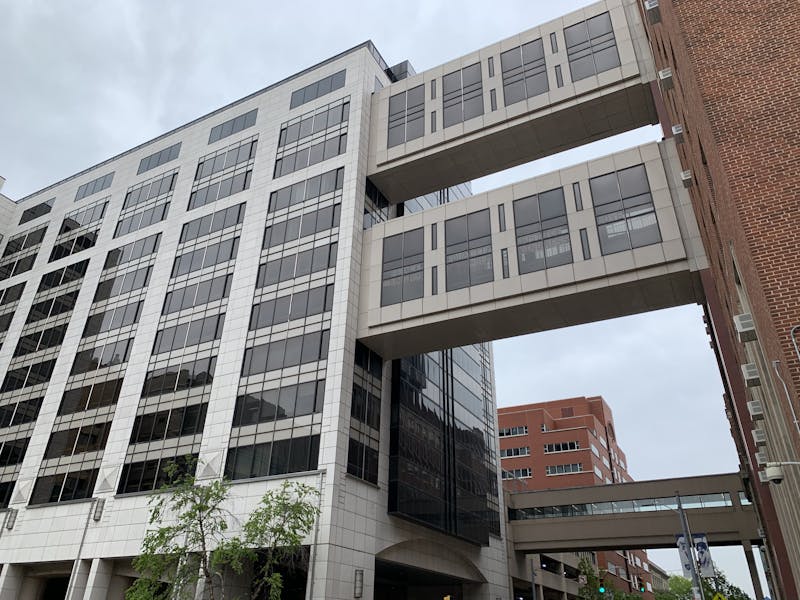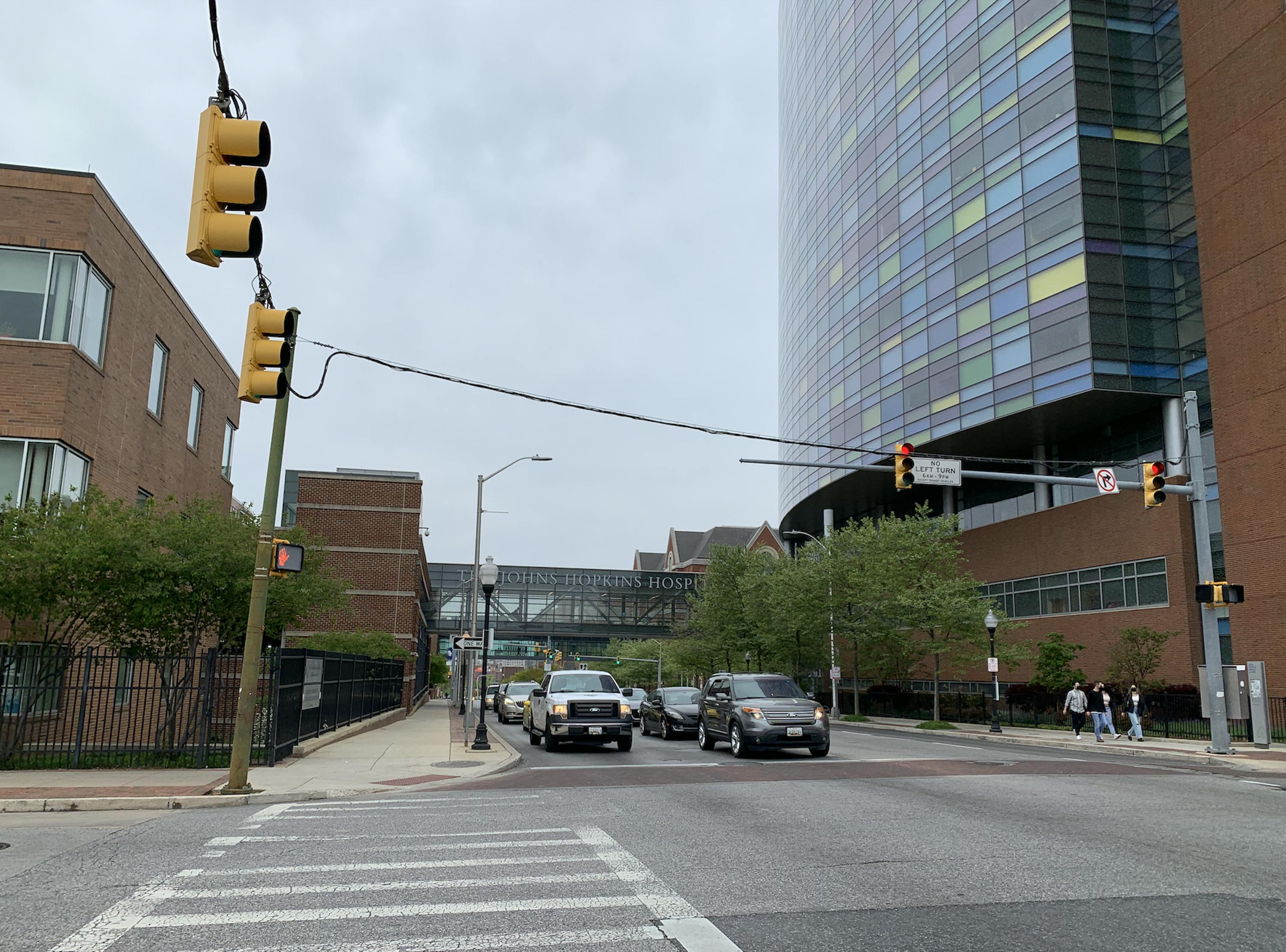
COURTESY OF KATY WILNER
The first African American student graduated from the School of Medicine in 1967.

COURTESY OF KATY WILNER
The first African American student graduated from the School of Medicine in 1967.
“As Black students begin the daunting process of applying to medical school, the structural racism and inequality that they experience is not always visible to the public,” Shavonia Wynn wrote in an email to The News-Letter.
Wynn is the director of Johns Hopkins Underrepresented in Medical Professions (JUMP), a program that was established in 2011 to support students from racial and ethnic minorities and first-generation, including first-generated and limited income students, who are pursuing health careers.
In the 2020-21 academic year, 7.6% of all students enrolled in medical school identified as Black or African American, according to the Association of American Medical Colleges (AAMC). The percentage of Black men enrolled in medical school has barely changed over the past five years, from 2.4% in 2014-15 to 2.9% in 2020-21.
Wynn explained that to truly understand these statistics, it is important to examine the 1910 publication titled “Medical Education in the United States and Canada,“ colloquially known as the Flexner Report. Abraham Flexner, who completed his undergraduate studies at Hopkins, examined 155 medical schools in the U.S. and Canada and outlined reforms in this report. William Welch, one of the “Big Four” founding professors at the School of Medicine, was a contributor.
In the report’s introduction, Henry Pritchett, president of the Carnegie Foundation for the Advancement of Teaching, portrayed the School of Medicine as the gold standard.
“In the suggestions which are made in this report looking toward the future development of medicine, it ought to be pointed out that no visionary or impossible achievement is contemplated,” Pritchett wrote. “It is not expected that a Johns Hopkins Medical School can be erected immediately in cities where public support of education has hitherto been meager.”

COURTESY OF MARVIS GUTIERREZ
Despite being over 300 pages, Flexner devotes only two pages of his report to describing his view of medical education for Black people. He reasoned that Black students should be trained for a medical profession because, in his view, it would prevent the potential spread of disease from the Black to the white population. Additionally, Flexner expressed his belief that a Black physician should be limited to serve patients of “his own race.”
“The negro must be educated not only for his sake, but for ours,” Flexner wrote. “He is, as far as human eye can see, a permanent factor in the nation. He has rights and due and value as an individual; but he has, besides, the tremendous importance that belongs to a potential source of infection and contagion.”
The Flexner Report recommended that historically Black medical schools be closed, with the exception of Meharry Medical College and Howard University College of Medicine.
Ann Steinecke and Charles Terrell conclude in their analysis of the Flexner Report that “the reform plan’s impact on the education of African American physicians, therefore, was predictably and drastically inequitable.” When they wrote this paper in 2010, Steinecke was a senior program specialist in the AAMC’s Diversity Policy and Programs, of which Terrell was the chief diversity officer.
A study published in the Journal of the American Medical Association last year estimated that had five other historically Black medical schools remained open, there would have been a 29% increase in the number of graduating Black physicians in 2019.
In the mid-twentieth century, the majority of Black medical students in the U.S. were enrolled in Meharry or Howard. Data collected by the AAMC revealed that of the 25,423 African American physicians who graduated from medical schools in the U.S. from 1950-98, 28% graduated from Meharry, Howard or Morehouse School of Medicine, which opened in 1978.
Steinecke and Terrell estimated that in that 48-year time period, about three Black physicians graduated every year from each of the 121 other U.S. medical schools.
According to Louise Cavagnaro’s “History of Segregation and Desegregation at JHMI,” the School of Medicine admitted its first Black student, James Nabwangu, a student from Nigeria, in 1962. Five years later, Robert Gamble became the first African American student to graduate from the School of Medicine.
By contrast, almost 20 years before Nabwangu and Gamble were admitted to the School of Medicine, the School of Hygiene — the precursor to the School of Public Health — admitted its first Black student, Reginald G. James, in 1946. James was also the University’s first Black graduate.
In 1979, the School of Medicine appointed Levi Watkins, who was the school’s first Black chief resident in cardiac surgery, to the admissions committee. Along with Earl Kidwell, who earned his degree from the School of Medicine, Watkins increased recruitment efforts for Black students. From 1979 to 1983, minority representation at the school increased by 400%.
In the mid-1920s, the AAMC formed “The Commission on Medical Education,” which, according to Charlotte G. Borst, was influential in convincing medical schools in the U.S. to evaluate applicants using criteria beyond their academic transcript.
“In every case, the female or nonwhite student was implicitly or even explicitly told that he or she was a token,” she wrote.
In her paper “History of Education Quarterly,“ Borst wrote that around the same time, Wilbert C. Davison of Duke University School of Medicine suggested that medical schools add three criteria for admission, including a written statement from the applicant, a personal interview and recommendation letters from science professors. By the late 1920s, most medical schools, including the School of Medicine, had incorporated interviews into its admissions process.
The new criteria decreased the number of applicants to medical school. According to Wynn, there was an ulterior motive to requiring interviews and recommendation letters: to create a student body that was mostly composed of white males.

In 1948, the Medical College Admissions Test (MCAT), was created and soon after became a widely accepted metric of the aptitude of medical applicants. Aptitude tests were first introduced in 1932 in an effort to make the medical admissions process more objective.
“This new test did ‘work’ in providing a scientific rationale for screening groups not acceptable to mainstream, white medical schools,” Borst wrote. “With the new test, African-American candidates, particularly those from historically black schools, tended to earn lower scores than white applicants.”
Wynn, whose PhD dissertation focused on the Black pre-med experience, specifically the MCAT, said that the test enabled admissions committees to discriminate against Black applicants.
“These racist practices allowed admission committees to deny admission on the premise of not meeting qualifications, while publicly indicating openness to accepting Black students,” Wynn said.
The AAMC began a nine-year study in 2014 to assess the validity of the 2015 MCAT by not only evaluating its power to predict performance of medical students but also evaluating its “fairness” for students from different racial, ethnic or disadvantaged backgrounds. AAMC released a 2020 report which concluded that MCAT scores “strongly predict” academic performance of medical students in their courses and licensure exams. Yet, racial disparities in MCAT scores exist. In 2020-2021, the mean MCAT score was approximately 506. The mean MCAT score for Black or African American test-takers was 498.
At the AAMC’s annual meeting in 2018, four deans of medical schools in the U.S. stated in a presentation that “considering applicants with a wider range of MCAT scores provides more flexibility in building diverse classes.”
Wynn explained that factors like educational inequalities, a lack of Black physician mentors, lack of support from STEM faculty, difficulty gaining unpaid shadowing or volunteer experiences and decreased access to research projects may play a role in the Black pre-med experience.
In a report released last year, the AAMC indicated that increases in the numbers of Black students entering medical school can largely be attributed to increases in enrollment at historically Black colleges and universities.
Additionally, to encourage enrollment from underrepresented minorities, medical schools — some in partnership with the AAMC — have developed pre-college pipeline programs and academic enrichment classes held on medical school campuses.
“These pipeline programs have contributed to increasing diversity in medicine; however, because it takes 10-11 years for a physician to graduate, the outcomes are slow and we need to drastically increase the numbers of competitive Black pre-med applicants within the pipeline,” Wynn wrote.
JUMP is a part of that initiative. Former New York City Mayor Michael Bloomberg’s historic $1.8 billion donation to Hopkins in 2018 has allowed JUMP to expand. Since August 2020, the program has broadened to include all students, including alumni taking a gap year before medical school, who identify as underrepresented racial and ethnic minorities, first-generation or limited-income. JUMP has 370 members; Wynn hopes to double this number by May 2022.
Last year, the AAMC and the National Medical Association announced the development of an Action Collaborative to develop solutions to increase representation of Black men in medicine. The presidents of both organizations acknowledged that systemic barriers underlie the “national crisis.” The AAMC’s 2020 10-step plan emphasizes the need for collaboration, investment and early exposure to careers in medicine.
“We need to eliminate institutional barriers to success, stop gaslighting Black pre-meds into thinking that becoming a physician is an insurmountable dream, and go beyond surface narratives to truly examine if everyone along the pre-med pathway is rowing the boat in the same direction for the collective success of Black pre-meds,” Wynn wrote.